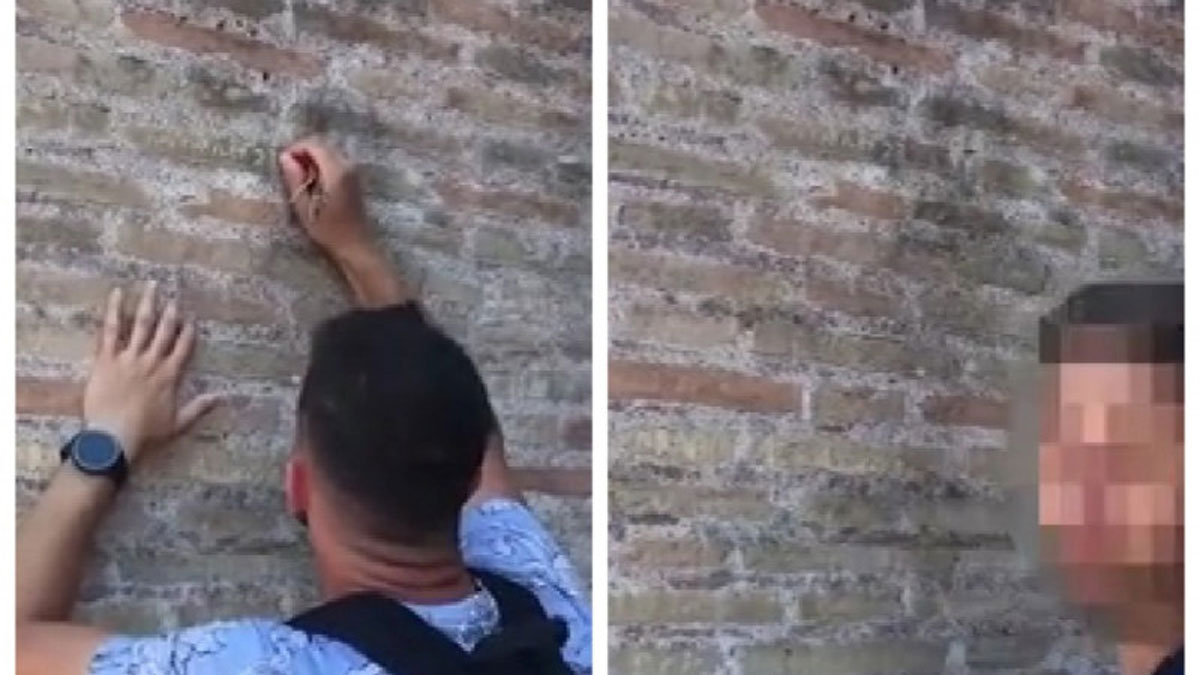The tourist was caught in a “romantic misconduct”: a young man engraved the name of his girlfriend with keys on one of the walls of the Colosseum.
The video was published by Metro. Despite the fact that the situation is fixable, the violator faces a large fine or even imprisonment.
The footage shows a tourist-looking man in shorts and a t-shirt with a backpack using keys to write “Haley” on the walls of an ancient 1937-year-old building. When the other tourist who was filming him turns to the man, he looks into the camera and grins, continuing his “noble” work.
Users were quick to condemn the man, calling him a “goat” and asking people to send the video to the police to have him arrested. If the “artist” is caught, he faces a hefty fine of over 18,000 euros and potentially up to a year in prison.
Unfortunately, such incidents are not uncommon in the Colosseum. Unauthorized engravings on the ancient structure periodically appear, causing significant damage to it. In most European countries, including Italy, damaging or defacing a work or cultural monument is a criminal offense punishable by a fine or even imprisonment. In 2020, the Italian Council of Ministers introduced fines ranging from 20,000 to 60,000 euros, as well as criminal penalties for those who “destroy, squander, spoil or misuse all or part of cultural property,” the source said.
Darius Arya, an archaeologist from Rome, told reporters that such hefty fines were introduced as a powerful signal to would-be vandals.
“This is an unusually high fee. It seems to say: “We will not tolerate this.” The authorities are forced to raise the rate as a form of protection,” the expert noted.
However, graffiti is nothing new for the ancient walls of the Colosseum: even the ancient Romans painted scenes from the arena and famous gladiators here. In 2013, during restoration work on the passage of the amphitheater, graffiti left by the gladiators themselves, as well as drawings from the 1600s, were discovered. It also turned out that several people wrote their names on the walls in the 1940s.

